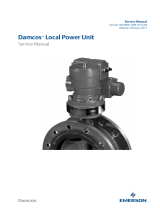
S-1
WARNING
NOTICE
SAFETY PRECAUTIONS
z Before installation, operation, maintenance, and/or inspection of this product, be sure to read
through carefully this manual and other related manuals. Do not use this product until you are
familiar with all the information concerning this product, safety information, and precautions
provided in those manuals.
z Keep this manual in a readily accessible place so that users of this product may easily reach it.
z This manual contains information on potential hazards that is intended as a guide for safe use of
this product. The potential hazards listed in the manual are divided into four hazard levels of
danger, warning, caution, and notice, according to the level of their severity. The following are
definitions of the safety labels containing the corresponding signal words DANGER,
WARNING, CAUTION, and NOTICE.
: This safety label identifies precautions that, if not heeded, will result in
death or serious injury.
: Identifies precautions that, if not heeded, could result in death or serious
injury.
: Identifies precautions that, if not heeded, could result in minor or moderate
injury.
: This safety label without a safety alert symbol identifies precautions that,
if not heeded, could result in property damage or loss not related to
personal injury.
Failure to observe any of the CAUTION and NOTICE statements used in this manual
could also lead to a serious consequence, depending on the situation in which this product is used.
Therefore, be sure to observe all of those statements without fail.
The following are definitions of the phrases “serious injury,” “minor or moderate injury,” and
“property damage or loss not related to personal injury” used in the above definitions of the safety
labels.
Serious injury: Is an injury that requires hospitalization for medical treatment, has aftereffects,
and/or requires long-term follow-up care. Examples of serious injuries are as follows: vision loss,
burn (caused by dry heat or extreme cold), electric-shock injury, broken bone, poisoning, etc.
Minor or moderate injury: Is an injury that does not require either hospitalization for medical
treatment or long-term follow-up care. Examples of minor or moderate injuries are as follows: burn,
electric-shock injury, etc.
Property damage or loss not related to personal injury: Is a damage to or loss of personal
property. Examples of property damages or losses not related to personal injury are as follows:
damage to this product or other equipment or their breakdown, loss of useful data, etc.
The safety precautions stated in this manual are based on the general rules of safety applicable to
this product. These safety precautions are a necessary complement to the various safety measures
included in this product. Although they have been planned carefully, the safety precautions posted
on this product and in the manual do not cover every possible hazard. Common sense and caution
must be used when operating this product. For safe operation and maintenance of this product,
establish your own safety rules and regulations according to your unique needs. A variety of
industry standards are available to establish such safety rules and regulations.
DANGER
CAUTION





















